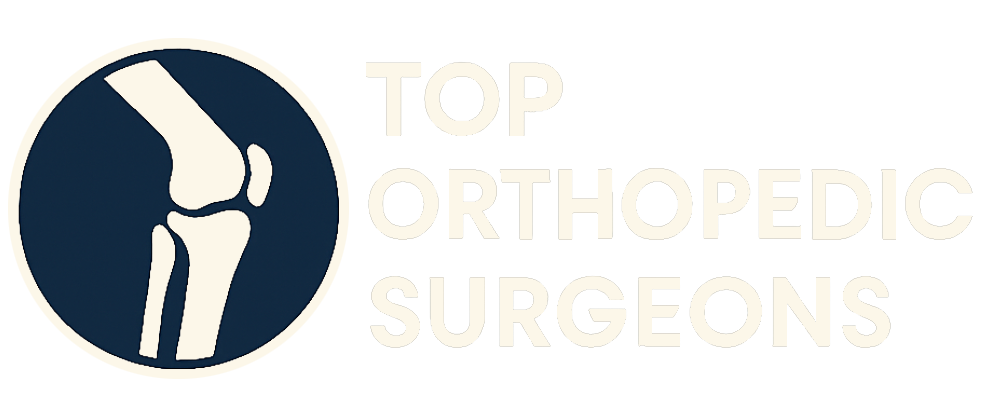Experiencing arm pain can significantly impact your daily life, limiting your ability to perform simple tasks and affecting your overall well-being. Understanding the potential causes of your arm pain is the first step toward finding effective relief and connecting with the right orthopedic specialist. This guide provides valuable information on common conditions, treatment options, and how to navigate your healthcare journey with confidence.
Common Causes of Arm Pain
The arm is a complex structure composed of bones, muscles, tendons, ligaments, and nerves, all working together to enable a wide range of motion. Due to this complexity, arm pain can arise from various sources. Identifying the specific cause is crucial for effective treatment.
Injuries
Injuries are a frequent source of arm pain. These can range from minor sprains to more severe fractures.
- Fractures: A broken bone in the arm, whether in the upper arm (humerus), forearm (radius and ulna), or wrist, will cause intense pain, swelling, and often a visible deformity. Fractures require immediate medical attention and typically involve immobilization with a cast or surgery.
- Sprains and Strains: These occur when ligaments (sprains) or muscles and tendons (strains) are stretched or torn. They often result from sudden impacts, overuse, or awkward movements. Symptoms include pain, swelling, bruising, and limited range of motion.
- Dislocations: A dislocation happens when a bone is forced out of its joint. Common arm dislocations involve the shoulder or elbow. Dislocations are very painful and require immediate medical attention to reposition the bone.
Overuse Injuries
Repetitive motions and activities can lead to overuse injuries that cause arm pain. These conditions develop gradually over time.
- Tendonitis: Tendonitis is the inflammation of a tendon, the tissue that connects muscle to bone. Common types of arm tendonitis include:
- Tennis Elbow (Lateral Epicondylitis): Pain on the outside of the elbow, often caused by repetitive wrist and forearm movements.
- Golfer’s Elbow (Medial Epicondylitis): Pain on the inside of the elbow, also associated with repetitive motions.
- Rotator Cuff Tendonitis: Inflammation of the tendons surrounding the shoulder joint, leading to shoulder and upper arm pain.
- Bursitis: Bursae are fluid-filled sacs that cushion joints and reduce friction. Bursitis is the inflammation of these sacs, causing pain and stiffness. Shoulder and elbow bursitis are common causes of arm pain.
- Carpal Tunnel Syndrome: This condition occurs when the median nerve, which runs through the carpal tunnel in the wrist, is compressed. Symptoms include numbness, tingling, and pain in the hand and arm.
Nerve-Related Conditions
Nerves can be compressed, irritated, or damaged, leading to arm pain and other neurological symptoms.
- Nerve Compression: Nerves in the arm can be compressed at various points, leading to pain, numbness, and weakness. Common sites of compression include the shoulder (thoracic outlet syndrome), elbow (cubital tunnel syndrome), and wrist (carpal tunnel syndrome).
- Peripheral Neuropathy: This condition involves damage to the peripheral nerves, which can be caused by diabetes, infections, or other medical conditions. Symptoms may include burning pain, numbness, and tingling in the arms and hands.
Other Conditions
Less common, but potentially serious, conditions can also cause arm pain.
- Arthritis: Osteoarthritis and rheumatoid arthritis can affect the joints in the arm, causing pain, stiffness, and swelling.
- Thoracic Outlet Syndrome: This condition involves compression of the nerves and blood vessels in the space between the collarbone and the first rib, leading to pain, numbness, and tingling in the arm and hand.
- Tumors: In rare cases, tumors in the arm or shoulder can cause pain and other symptoms.
Diagnosing the Cause of Your Arm Pain
A proper diagnosis is essential for determining the most effective treatment plan. Your orthopedic specialist will conduct a thorough evaluation, which may include:
- Medical History: Discussing your symptoms, past medical conditions, and any recent injuries.
- Physical Examination: Assessing your range of motion, strength, and reflexes, and palpating the arm to identify areas of tenderness or swelling.
- Imaging Tests:
- X-rays: To visualize bones and identify fractures or arthritis.
- MRI: To evaluate soft tissues such as ligaments, tendons, and nerves.
- CT Scan: Provides detailed images of bones and soft tissues.
- Nerve Conduction Studies: To assess nerve function and identify nerve compression.
Treatment Options for Arm Pain
The treatment for arm pain depends on the underlying cause and the severity of the condition. A variety of options are available, ranging from conservative measures to surgical interventions.
Conservative Treatments
Many cases of arm pain can be effectively managed with conservative treatments.
- Rest: Avoiding activities that aggravate your pain is crucial for allowing tissues to heal.
- Ice and Heat: Applying ice to the affected area can reduce inflammation and pain, while heat can help relax muscles and improve blood flow.
- Pain Medication: Over-the-counter pain relievers such as ibuprofen or acetaminophen can help manage pain. In some cases, your doctor may prescribe stronger pain medications.
- Physical Therapy: A physical therapist can teach you exercises to strengthen your arm muscles, improve your range of motion, and reduce pain.
- Braces and Splints: These devices can help immobilize the arm and provide support, allowing injured tissues to heal.
- Injections: Corticosteroid injections can reduce inflammation and pain in specific areas, such as the shoulder, elbow, or wrist.
Surgical Treatments
If conservative treatments are not effective, surgery may be necessary to address the underlying cause of your arm pain.
- Arthroscopic Surgery: A minimally invasive procedure that uses small incisions and a camera to visualize and repair damaged tissues in the joint. This may be used for rotator cuff repairs, cartilage repairs, or to remove bone spurs.
- Open Surgery: In some cases, a more traditional open surgery may be required to address complex injuries or conditions.
- Nerve Release Surgery: This procedure involves releasing pressure on a compressed nerve, such as in carpal tunnel syndrome or cubital tunnel syndrome.
- Fracture Repair: Surgery may be necessary to stabilize a broken bone with plates, screws, or rods.
Preventing Arm Pain
While not all arm pain is preventable, there are steps you can take to reduce your risk of injury and overuse.
- Proper Warm-up and Stretching: Before engaging in physical activity, warm up your muscles and stretch your arms to improve flexibility and reduce the risk of injury.
- Use Proper Technique: Whether you’re playing sports, working on a computer, or lifting heavy objects, using proper technique can help prevent overuse injuries.
- Take Breaks: If you’re performing repetitive tasks, take frequent breaks to rest your arms and hands.
- Maintain Good Posture: Good posture can help reduce stress on your arms and shoulders.
- Strengthen Your Muscles: Strengthening your arm and shoulder muscles can help support your joints and prevent injuries.
Finding the Right Orthopedic Specialist
If you’re experiencing persistent or severe arm pain, it’s important to consult with an orthopedic specialist. These highly trained physicians specialize in the diagnosis and treatment of musculoskeletal conditions, including those affecting the arm. But finding the right specialist can feel overwhelming.
What to Look For in an Orthopedic Specialist
When choosing an orthopedic specialist, consider the following factors:
- Board Certification: Ensure that the specialist is board-certified in orthopedic surgery. This indicates that they have met rigorous standards of education, training, and competency.
- Experience: Look for a specialist who has experience treating your specific condition. Ask about their experience with the procedures or treatments you may need.
- Specialization: Some orthopedic specialists focus on specific areas of the body, such as the shoulder, elbow, or wrist. If you have a specific condition, consider choosing a specialist who focuses on that area.
- Patient Reviews: Read online reviews to get a sense of other patients’ experiences with the specialist.
- Communication Style: Choose a specialist who communicates clearly and effectively, and who makes you feel comfortable asking questions.
How Top Orthopedic Surgeons Can Help
Top Orthopedic Surgeons simplifies the process of finding qualified and trusted orthopedic specialists across the United States. Our comprehensive directory provides detailed profiles of board-certified orthopedic surgeons, allowing you to easily search for specialists based on location, specialization, and other criteria. We aim to empower you to make informed decisions about your healthcare by providing access to the best orthopedic care available.
Taking the Next Step
Don’t let arm pain limit your life. By understanding the potential causes, exploring treatment options, and connecting with a qualified orthopedic specialist, you can take control of your health and find lasting relief. Start your journey toward a pain-free arm today by searching our directory and finding the right specialist for your needs.
We are here to support you in making informed decisions about your orthopedic care. With the right information and the right specialist, you can regain comfort and function and return to the activities you enjoy.


